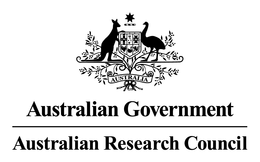AustArch: A Database of 14C and Luminescence Ages from Archaeological Sites in Australia
Alan Williams, Sean Ulm, 2014. https://doi.org/10.5284/1027216. How to cite using this DOI
Data copyright © Alan Williams unless otherwise stated
This work is licensed under the ADS Terms of Use and Access.
Primary contact
Alan
Williams
Fenner School of Environment and Society
Australian National University
Canberra
ACT 0200
Australia
Resource identifiers
- ADS Collection: 1661
- DOI:https://doi.org/10.5284/1027216
- How to cite using this DOI
| Record ID | 11180 |
|---|---|
| Site | MHE 8 (Merimbula Lake) |
| IBRA Region | South East Corner |
| Longitude | 149.89 |
| Latitude | -36.89 |
| Site Type | Midden |
| Lab Code | ANU-5001 |
| Age | 2190 |
| Error | 90 |
| Date Issues | Date is considered erroneous - see Notes |
| Material | Marine shell |
| Context | F |
| Depth from surface (cm) | 50 |
| Method | Radiocarbon |
| Data pertinent for time-series analysis or calibration | Unusuable |
| Open or closed site | Closed |
| Directly related to occupation? | Y |
| Source | ANU Archaeological Consultancies, 1986a (Full bibliographic references are available from the Downloads page) |
| Notes | A shell midden located on the shores of Merimbula Lake and investigated/salvaged prior to residential development. MHE 10 had been previously disturbed through the construction of a track and was only minimally investgiated compared with MHE 8 (undertaken as part of the same salvage). The sites were dominated by Sydney cockle shell with a sharp increase in Oyster shell (to 20%) in the lowest 15 cm of the site. Mud whelk was also consistently present in low numbers. Minimal terrestrial bone was identified including kangaroo, lizard. fish bones and rabbit. Minimal artefacts were recovered indicating a preference for rhyolite and quartz raw materials. Two backed pieces were identified in the upper 5 cm of the MHE 8. The highest concentrations of artefacts were between 45-50 cm in MHE 10 (n=48 (53%)). Preference for quartx increases in the upper levels and suggests a move from backed artefacts to a 'less distinctive industry'. The author considers this date anomously young. |







